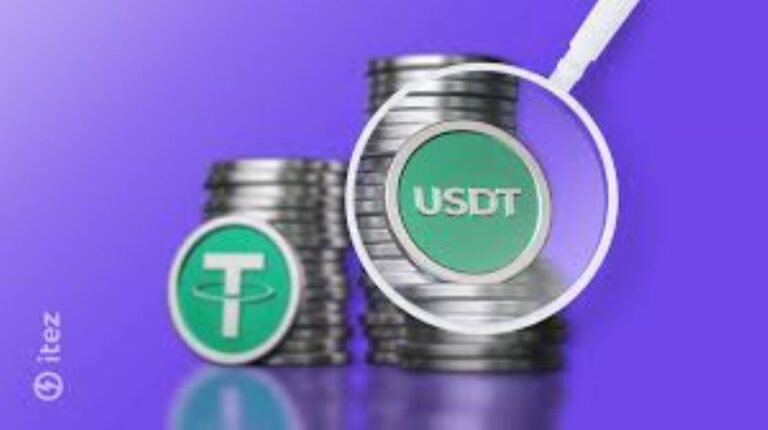In the dynamic world of cryptocurrencies, where volatility and rapid changes are the norms, stability is a highly prized attribute. This is where stablecoins come into play. Among these, Tether (USDT) stands out as one of the most widely used and recognized stablecoins. But what exactly is USDT, and why has it become so integral to the cryptocurrency ecosystem? This article delves into the concept of USDT, exploring its origins, mechanics, use cases, controversies, and future.
What is USDT ?
USDT, also known as Tether, is a type of cryptocurrency known as a stablecoin. Unlike traditional cryptocurrencies such as Bitcoin or Ethereum, which are known for their price volatility, USDT is designed to maintain a stable value by being pegged to a fiat currency—in this case, the US dollar. The goal of USDT is to provide the stability of the dollar while harnessing the benefits of blockchain technology.
The Origins of USDT
Tether was introduced in 2014 by Tether Limited, a company founded by Brock Pierce, Reeve Collins, and Craig Sellars. The original vision was to create a digital currency that could combine the stability of the US dollar with the advantages of cryptocurrencies, such as fast transactions and global accessibility.
How Does USDT Work?
USDT operates on several blockchain platforms, including Bitcoin (via the Omni Layer), Ethereum (as an ERC-20 token), Tron (as a TRC-20 token), and others. The underlying mechanism behind USDT involves the following components:
- Pegging Mechanism: USDT is pegged to the US dollar, meaning each USDT is theoretically backed by an equivalent amount of USD held in reserve by Tether Limited. The idea is to maintain a 1:1 value ratio with the dollar.
- Issuance and Redemption: Tether Limited issues USDT tokens when users deposit USD or other assets into their reserve accounts. Conversely, users can redeem USDT for USD, theoretically maintaining the peg.
- Blockchain Technology: USDT leverages blockchain technology to facilitate transparent and secure transactions. The choice of blockchain platform affects the token’s transaction speed, cost, and accessibility.
- Reserve Management: To ensure stability, Tether Limited manages reserves that are intended to back the circulating supply of USDT. These reserves include traditional cash, cash equivalents, and other assets.
Use Cases of what is USDT
USDT serves multiple functions in the cryptocurrency ecosystem:
- Trading: Traders use USDT to hedge against the volatility of other cryptocurrencies. By converting volatile assets into USDT, traders can preserve value and manage risk during market fluctuations.
- Liquidity: USDT provides liquidity to cryptocurrency exchanges. It acts as a bridge between fiat currencies and other digital assets, facilitating easier entry and exit from the crypto markets.
- Cross-Border Transactions: Due to its stability and digital nature, USDT can be used for cross-border transactions, allowing users to bypass traditional banking systems and international transfer fees.
- DeFi and Lending: In the decentralized finance (DeFi) space, USDT is frequently used in lending protocols, yield farming, and other financial applications. Its stability makes it a preferred choice for users looking to earn interest or provide liquidity.
Controversies and Criticisms
Despite its popularity, USDT’s has faced significant scrutiny and controversy:
- Reserve Transparency: One of the major criticisms of Tether is the transparency of its reserves. There have been concerns about whether Tether Limited truly holds sufficient reserves to back all USDT’s in circulation. While Tether Limited has provided attestations and reports from third-party firms, critics argue that these reports are not comprehensive or transparent enough.
- Regulatory Issues: Tether has faced regulatory scrutiny from various authorities. For example, in 2021, the New York Attorney General’s office reached a settlement with Tether and Bitfinex (its affiliated exchange) over allegations of misrepresenting the backing of USDT’s. The settlement required Tether to provide quarterly reports on its reserves.
- Market Impact: There are concerns about the impact of large USDT’s issuances or redemptions on the cryptocurrency market. Large-scale creation or destruction of USDT’s can potentially influence market prices and liquidity.
The Future of USDT
Looking ahead, several factors will shape the future of USDT:
- Regulatory Developments: As regulatory frameworks for stablecoins evolve, Tether will need to navigate new compliance requirements and transparency standards. How Tether adapts to these regulations will impact its continued operation and trustworthiness.
- Technological Advancements: The blockchain space is continuously evolving. Tether’s ability to adapt to new technologies and blockchain platforms could affect its competitiveness and functionality.
- Market Dynamics: The rise of new stablecoins and alternative digital assets may influence USDT’s market position. Competitors offering enhanced features or better transparency could challenge Tether’s dominance.
- Adoption Trends: The broader adoption of stablecoins in mainstream financial systems and institutions could bolster USDT’s use cases and integration. Conversely, shifts in user preferences and market dynamics could affect its relevance.
Conclusion
USDT’s or Tether, plays a crucial role in the cryptocurrency ecosystem by providing a stable digital asset that facilitates trading, liquidity, and various financial applications. Its design to peg to the US dollar aims to combine the benefits of blockchain technology with the stability of fiat currency. Despite its widespread use and significant impact, USDT’s has faced scrutiny over reserve transparency and regulatory compliance. As the cryptocurrency landscape evolves, the future of USDT’s will be influenced by regulatory developments, technological advancements, market dynamics, and adoption trends. In conclusion, understanding USDT’s is essential for anyone involved in the cryptocurrency space, whether you’re a trader, investor, or simply curious about digital currencies. Its role as a stablecoin highlights the ongoing innovation in financial systems and the quest for stability in an otherwise volatile m

